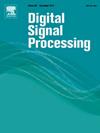JIRE-Net: Low-light image enhancement with joint enhancement network of illumination and reflection maps
IF 2.9
3区 工程技术
Q2 ENGINEERING, ELECTRICAL & ELECTRONIC
引用次数: 0
Abstract
Images captured in dark conditions unavoidably suffer from poor visibility issues. Numerous methods addressing these challenges are developed based on the Retinex theory, which decomposes an observed image into illumination and reflection maps, promoting refined processing to enhance image quality. However, most of such methods treat the illumination and reflection components separately, without considering their informational interaction. The proposed method reinforces the collaboration of illumination and reflection with a joint enhancement network named JIRE-Net. We first utilize the powerful feature extraction capability of the convolutional neural network (CNN) to construct a decomposition network. Subsequently, we elaborately designed an Illumination-Driven Transformer-based network structure to reconstruct the normal-light image. Specifically, the Channel Attention Module (IB-CAM) is formulated to promote the features in reflection, which utilize the information of attention weights calculated based on the illumination map. Thereafter, the Illumination-Driven Guidance Block (IDGB) is designed to capture dependencies across input features, cooperatively enhancing the reflection and illumination features. The experimental results on the existing benchmark datasets show that our method obtains better quantitative and qualitative results, achieving a more balanced overall brightness appearance and color quality while preserving finer texture and structural details.
求助全文
约1分钟内获得全文
求助全文
来源期刊

Digital Signal Processing
工程技术-工程:电子与电气
CiteScore
5.30
自引率
17.20%
发文量
435
审稿时长
66 days
期刊介绍:
Digital Signal Processing: A Review Journal is one of the oldest and most established journals in the field of signal processing yet it aims to be the most innovative. The Journal invites top quality research articles at the frontiers of research in all aspects of signal processing. Our objective is to provide a platform for the publication of ground-breaking research in signal processing with both academic and industrial appeal.
The journal has a special emphasis on statistical signal processing methodology such as Bayesian signal processing, and encourages articles on emerging applications of signal processing such as:
• big data• machine learning• internet of things• information security• systems biology and computational biology,• financial time series analysis,• autonomous vehicles,• quantum computing,• neuromorphic engineering,• human-computer interaction and intelligent user interfaces,• environmental signal processing,• geophysical signal processing including seismic signal processing,• chemioinformatics and bioinformatics,• audio, visual and performance arts,• disaster management and prevention,• renewable energy,
 求助内容:
求助内容: 应助结果提醒方式:
应助结果提醒方式:


